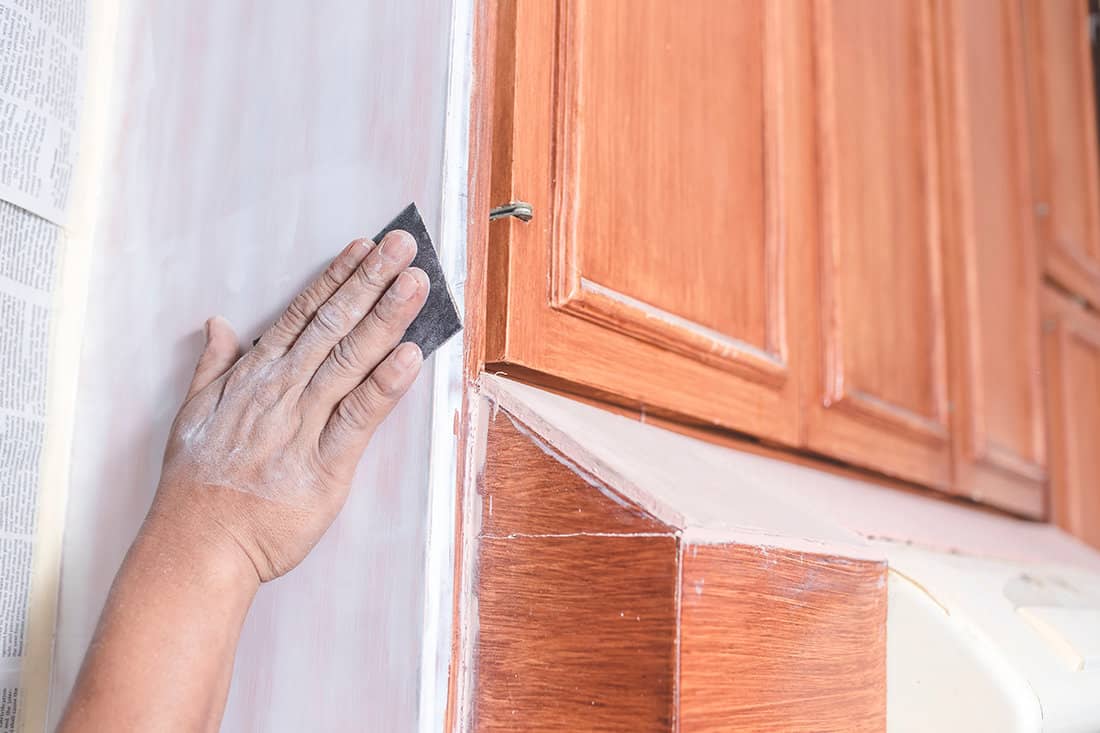Understanding Grit Levels and Their Applications

The grit of sandpaper, which refers to the coarseness of the abrasive particles, is crucial for achieving the desired finish when refinishing kitchen cabinets. Choosing the right grit sandpaper ensures efficient sanding and a smooth, even surface.
Grit Numbering System
The grit numbering system for sandpaper indicates the coarseness of the abrasive particles. A lower grit number signifies coarser sandpaper with larger particles, while a higher grit number represents finer sandpaper with smaller particles. This system allows for a consistent understanding of the sandpaper’s abrasiveness, making it easier to select the appropriate grit for a particular sanding task.
Grit Levels for Kitchen Cabinet Refinishing
Different grit levels are used throughout the cabinet refinishing process, each serving a specific purpose.
Common Grit Levels and Their Applications
The following table Artikels the common grit levels used for kitchen cabinet refinishing and their corresponding applications:
| Grit Level | Description | Application |
|—|—|—|
| 40-60 | Coarse | Removing old paint, varnish, or other coatings. |
| 80-100 | Medium | Smoothing out rough surfaces, removing scratches and imperfections. |
| 120-150 | Fine | Preparing the surface for painting or staining. |
| 180-220 | Very fine | Achieving a smooth, even finish. |
| 240-400 | Ultra-fine | Creating a polished, high-quality finish. |
For example, you might start with a coarse 60-grit sandpaper to remove old paint, then progress to a medium 100-grit sandpaper to smooth out the surface. Finally, you might use a fine 180-grit sandpaper to prepare the surface for painting and achieve a smooth finish.
Sanding Techniques and Best Practices: What Grit Sandpaper For Kitchen Cabinets

Sanding is an essential step in preparing kitchen cabinets for painting or staining. It helps to create a smooth, even surface for the finish to adhere to. This section provides a step-by-step guide for sanding kitchen cabinets using different grit levels and discusses best practices to ensure optimal results.
Sanding with the Grain
Sanding with the grain of the wood is essential for creating a smooth, even surface. Sanding against the grain can leave scratches that will be visible in the final finish. The grain of the wood is the direction of the wood fibers. It can be seen as the natural pattern or texture of the wood.
Sanding with the grain involves moving the sandpaper in the same direction as the wood fibers. You can determine the direction of the grain by looking at the wood and following the natural pattern of the fibers.
Sanding Techniques and Recommended Grit Levels
- Start with a coarse grit sandpaper (80-120 grit) to remove any major imperfections, such as scratches, dents, or uneven surfaces.
- Progress to a medium grit sandpaper (150-220 grit) to smooth out the surface and remove any remaining scratches.
- Finish with a fine grit sandpaper (240-400 grit) to create a smooth, even surface for painting or staining.
| Sanding Stage | Recommended Grit Levels |
|---|---|
| Initial sanding | 80-120 grit |
| Intermediate sanding | 150-220 grit |
| Final sanding | 240-400 grit |
Important Considerations for Effective Sanding, What grit sandpaper for kitchen cabinets
- Use a sanding block or orbital sander to ensure even pressure and prevent sanding marks.
- Sand in the direction of the wood grain to avoid scratches and create a smooth surface.
- Work in small sections to ensure that the surface is sanded evenly.
- Remove dust regularly to prevent clogging of the sandpaper and to avoid scratching the surface.
- Use a tack cloth to remove any remaining dust before painting or staining.
Tips for Avoiding Damage
- Do not press too hard, as this can damage the wood.
- Use a light touch and let the sandpaper do the work.
- Avoid sanding in one spot for too long, as this can create a dip in the wood.
- If you are sanding a softwood, be careful not to sand through the wood.
What grit sandpaper for kitchen cabinets – Choosing the right grit sandpaper for your kitchen cabinets is crucial for achieving a smooth, even finish. Whether you’re tackling minor imperfections or prepping for a fresh coat of paint, the grit level plays a vital role. If you’re looking for a touch of greenery to complement your refreshed cabinets, consider adding some fake plants for top of cabinets.
They provide a pop of color and texture without the need for constant watering and maintenance. Once your cabinets are sanded and prepped, you’ll be ready to showcase their new look, with or without the added touch of faux foliage.
The right grit sandpaper for your kitchen cabinets depends on the level of sanding needed, but if you’re going for a polished, almost glassy finish, you’ll want to consider a finer grit. Imagine the smooth, cool surface of a marble top accent cabinet , that’s the kind of sheen you’re aiming for.
Sanding with a finer grit will help you achieve that smooth, polished look, enhancing the overall aesthetic of your kitchen cabinets.
